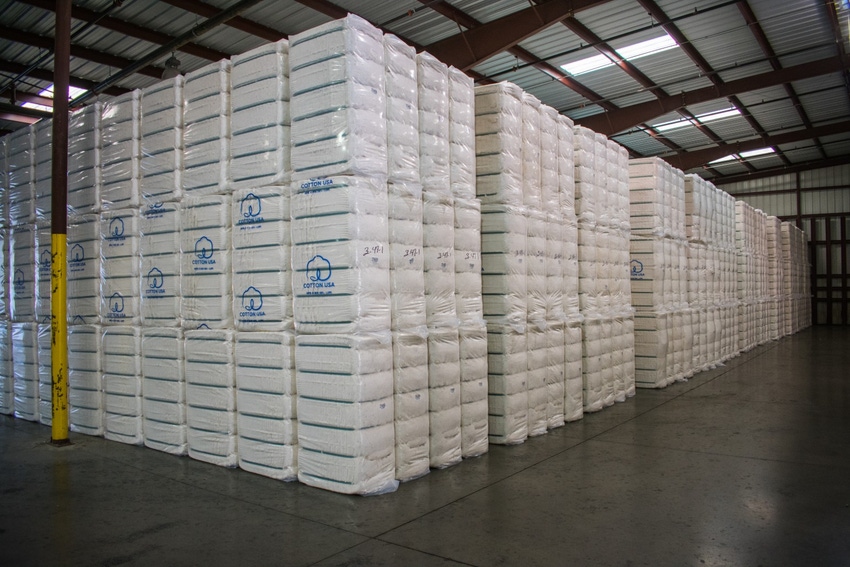
The COVD-19 pandemic has clearly impacted yarn and fiber demand as consumers purchased less clothing and other textile products, and cotton took a direct hit in mill use.
In a Aug. 18 webinar, Jon Devine, senior economist with Cotton Incorporated, noted that global mill use estimates for cotton for 2019/2020 are down 15% from January while yarn and fiber production is up 2 percent. Large supplies are expected to be carried over from 2019/2020 with another surplus expected in 2020/2021.This is expected to have a negative impact on prices.
Devine said the 20 million reduction in forecasted mill use resulted in a 20 million bale increase in global ending stocks. Stocks are expected to reach their highest level in more than 10 years. The new crop year began with the second highest volume of cotton in storage ever seen, second only to the years after the price spike of 2007 when high prices encouraged more cotton acres and decreased consumption.
For the 2021 crop year, Devine expects another slight surplus. High stocks are expected in both the United States and globally and the challenge remains to find ways to move the surplus into the marketplace.
“A lot of growers around the world already had cotton locked in as their choice. USDA is forecasting a pretty strong increase in mill use, built on expectations of a rebound in GDP, particularly as we get deeper in the 2020 crop year and into the 2021 calendar year,” Devine said.
“That may or may not be realistic. Even with what could be considered a somewhat aggressive growth in mill use, we are expecting to have another surplus in the coming year, meaning another addition to ending stocks, meaning there will be plenty of cotton supply out there which could make it a tough price environment for some time to come,” he said.
Since the United States exports 85 percent of its cotton every year, Devine said a lot of the questions are centered on exports. The good news is that despite the challenging economic environment, U.S. export commitments are down only 15 percent relative to last year, so demand has held up pretty well in terms of the number of U.S. contracts signed for export delivery.
“Of course, we want to see if all of those contracts materialize in terms of physical shipments. As always there are some questions about whether or not that will happen,” Devine said.
Thanks to the Phase One agreement, U.S. cotton sales to China have increased over the past couple of months. “Since COVID really started to lock down the world, we’ve seen China become the dominant buyer of our cotton. From April through the end of the crop year China represented 70% of all of our export sale,” Devine said.
“China has been making purchases. Everywhere else has essentially been crickets for the past few months. Things have gotten a little bit more tricky with China here recently as well so we will see what may happen with Phase One and whether or not those contracts will get turned into physical shipments,” he said.
Ramping tensions between the United States and China, such as the Hong Kong protests and the United States not agreeing with the crackdown China has been enforcing on Hong Kong, continue to cloud the market.
Through it all, Devine said it is critical to get beyond COVID-19 and to get the demand motor into higher gear. Still, excess inventory throughout the supply chain needs to be cleared before there is a real strong tug from demands once in starts to surface.
About the Author(s)
You May Also Like






